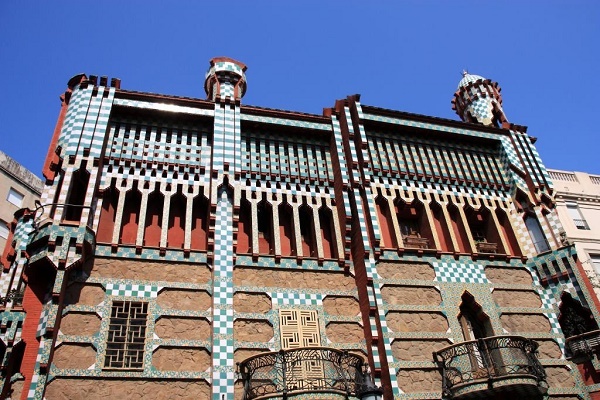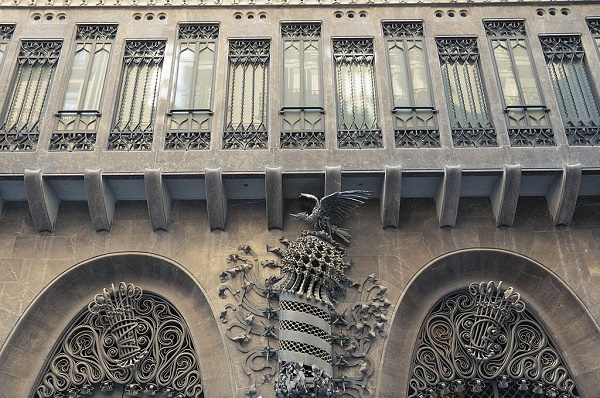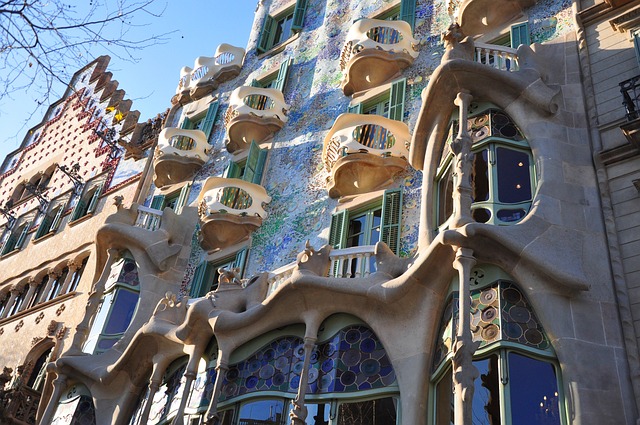Barcelona, the cosmopolitan capital of the Catalonia region of Spain, is not just home to one of the most popular Football clubs in the world but also a major cultural centre of southwestern Europe. The arts and architectural creations of Barcelona could leave even the most veteran enthusiasts speechless. Among them, some noteworthy inceptions by Antoni Gaudí, the most influential and prolific architect in Spain, dot the city like luminous gems. He is responsible for inventing unique styles and designs which inspired the modern generation of architects to the point of imitation. Among the 10 most visited tourist attractions in the city, 4 are his creations. From Palau Güell to Sagrada Familia church, this article will be highlighting some of the best works of art by Antoni Gaudí and some hidden gems of Spain that deserve global recognition.
Casa Vicens
It would be a crime to talk about the notable creations of Antoni Gaudí and not mention the first-ever building he designed, Casa Vicens. This house was commissioned by Manel Vicenz, a rich stock and currency broker, in 1883. Originally designed as a summer home for Vicenz, now remains a magnificent sight to behold on 24 Carolines Street.

The building and most of its rooms have features inspired by Islamic architecture and are embellished with ceramic and ornamental decorations. After completing this building he became very well-known in Barcelona for his unique and creative design. This was also the first house by Gaudí to be declared a UNESCO World Heritage site. Since 2018 it has been visited by countless spectators who are admirers of the mix of Mudejar and Spanish styles of the building and are curious to learn about its history.
Palau Güell
Another entry to the UNESCO World Heritage site list is this elegant structure standing so proudly in the El Raval neighbourhood in Barcelona. This house was built in 1886, centring around the main entertainment room for high society guests. The luxuriously decorated walls and ceilings, the small viewing windows, and the small holes in the ceiling to hang up lanterns were intricately designed to give the room a starry night feeling.

This house was built for the wealthy industrialist Eusebi Güell, who was an admirer of Gaudí’s work and even financed some of his other projects. Though it is not as popular as other designs by the master architect, the interiors of the palace are truly out of this world and way ahead of their time. If you are ever in Barcelona, do pay this palace a visit.
Collegi de les Teresianes
This religious school was initially designed by San Enrique De Ossoand was later handed to Antoni Gaudí when the structure of the school was already 80 cm high in 1887. He erected the rest of the building on a tight budget with clear instructions to maintain the simplicity of the lines and shapes to stick to the religious vows of poverty.
To stick to the strict budget, Gaudí made great use of inexpensive material, bricks, to build it from the ground up. That being said, Gaudy still took the liberty of adding a pop of his unique styles of design here and there in the building. For instance, the points that crown the Facades, the entrance bust which highlights the coat of arms of the structure, and not to mention the embellishment of the exterior walls with multicoloured crystals. Though medieval from the outside the interiors of the school building were referencing Gothic and Mudejar Styles. The grand main corridor was lined with a series of long catenary arches.
Casa Batllo
Officially known as Museo modernista de Antoni Gaudí, Casa Batllo stands out even among the many masterpieces of Gaudí and is an exemplary structure of the Modernist architectural style. The building with 4 floors consisting of 8 homes was remodelled by Gaudí for Josep Batlló, an influential textile magnate, in 1904, and in 1906 it was chosen as one of the top 3 buildings in Barcelona. Currently, the estimated price of the structure stands close to 70 million Euros.

Casa Batllo resembles the spear of Saint George stabbing a dragon’s back due to the inclusion of forged iron, stone, and ceramics in the design. The facade of the structure is a depiction of fish scales and is covered with mosaics. There are no sharp corners in the building, so it bears a resemblance to the waves of the ocean, while the balconies look like massive jaws of marine creatures trying to escape from the sea. The museum-like edifice is also nicknamed the ‘House of Bones’ since the balconies also showcase skulls, referencing the dragon’s victims. And if you thought that the exterior of the building was jaw-dropping then you wouldn’t even believe the visuals of the interiors unless you see them with your own eyes.
Sagrada Familia
Finally, let’s talk about the most famous tourist attraction of Barcelona, Sagrada Familia Church. The name Sagrada Familia means basilica and the expiatory church of the Holy Family. Though the construction of this grand basilica started in march of 1882, was halted due to the eruption of the Spanish civil war. When the war ended, Gaudí continued to work on it till his death. Till 2019, the church is only 70% near completion with its estimated date to be within 2026.

The architectural design of the church creates perfect harmonization and balance between man, nature and religion. The original plans of Gaudí for the church included 18 towers, with the central one being 170m in height. The interiors of the temple are very impressive as well. It features a series of unique tree-like columns that supports the roof of the church, and stained-glass windows exude a unique sense of serenity. Underneath it all sits the ‘museum of the Sagrada Família’ which tells the tale of the history of the church including original drawings, models, and photos from Gaudí’s day. However, the most interesting part of the church is the crypt under the altar where lies the last resting place of Antoni Gaudí himself. He was buried there on 12 June 1926, which makes this the oldest part of the grand basilica.
if you are interested in visiting and learning more about such interesting and exquisite destinations, then what are you waiting for? Plan your next trip with NCL Tours right away.




Comments
Loading…